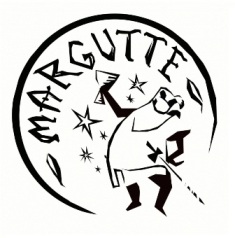A. ROBERT LEE
Tokyo Sakura Tree
Yes, it’s a Japan-icon, the nation’s postcard.
Cherry blossoms.
Branch-born, bud to flower.
Wind-gyres of floating white-pink petal.
Imprints upon woodblock, flag, coin, kimono.
Even upon street manhole covers.
Japan’s colour code.
But, at Springtime bloom,
the trees themselves serve more.
Arboreal umbrellas, parasols.
Each compact bough bears floral clouds.
Families gather beneath on blue tarpaulin.
Hanami, the ceremony-picnics and sake.
This gentle tree crochets the land.
City avenue and park, country lane and field.
Sakura-no-ki.
Sakura tree.
Japan’s diagram tree.
*
The Major Oak
Sherwood Forest.
It was the first of my celebrity trees.
A youth visit and still I remember
the huge branch arms and limbs
the zimmer-like scaffolding
the seeming doorway.
You couldn’t help but be full of the folklore.
Robin. Marian.
The Merry Men.
Tuck, John, Will.
Nottingham’s bad sheriff.
But, to my then young eye and touch
the tree just about gave off more.
Unlike crags, or abbeys, or even a castle or two,
the tree, I almost grasped,
made time alive, physical.
Crown. Thickness of trunk.
Outspread boughs. Leaf array.
Messaged bark.
A working Nature clock.
An oak chronometer.
The breathing sap of a thousand years.
Yet myself there for the half-hour.
*
Banyan
One and yet multiple.
Up-spiralling. Latticed. Pergola.
Each banyan a species of open thatch.
Impressive. The connecting family.
And a touch sinister.
You learn mock-horror designations like strangler fig.
Religion gives avatar status: Hindu, Buddhist, Animist.
The wholly beginning arborist,
my own encounters knew none of it.
There was Lahaina, Courthouse Maui.
The Pacific world’s largest.
There was Tahiti, Papeete.
Gauguin’s absinthe tree-bar.
There was Ankor Wat.
The knot and grope of root-hands.
Thoughts also grow.
Can trees, those upright citizens,
twist into this root and branch deviousness?
If beauteous does not their cross-ply
give a human reminder?
*
Muir Woods Sequoia
California redwoods yet Cherokee named.
Inside Scot-birthed Muir’s National Park.
Tree royalty. Vertical monarchs.
Forest court. Eco-canopy.
To be sure it’s the high rise, the arboreal ascent.
Your supplicant gaze goes sky-bound.
But it’s also the picture frame.
Soil base. Humus. Burl. Fern.
Cone and seeds.
Stretch-mark sponge bark.
Trunk highways to crown leaves.
Pacific sun and fog, coastal rain curtains.
You stare, on a clear day,
into the lens of light and ray.
The startle of a sunburst in the clearing.
The columnar parade of ancients.
The geometries of shadow.
The tree-top aperture.
Never, quite, have you felt
so groundling a visitor to any gallery.
Never, quite, have your feet felt
so weighted.
Looking up you think yourself
a small ocular part of the portrait.
*
Spanish Palmera
Spain’s palm trees.
Why, we even have one in our Murcia garden.
Palma. Palmera.
Place-named into the culture.
Palma de Mallorca.
Las Palmas de Gran Canaria.
You can add the Pacific’s every tropic island.
You can add Africa, Hawai‘i, Mexico or India.
You can summon symbols,
Rome’s games, Christian palms, Haiti’s flag.
You can do eat and drink.
Palm nut, wine, oil, starch, date, and from one kind, coconut.
But daily I look upon the close-at-hand tree.
The stalk trunk.
The elephant ears palms
The breezed sway and bend.
The seed clusters.
The spiked greenery.
It offers a signature.
A tree, a diagram, of home and away intimacy.
*
Valencia Silk Floss Tree
March sun in Valencia.
You’re ear-shaken by La Mascletà at 2pm.
Gunpowder concert and volley.
The heralding of La Fallas.
Each ninot of waiting face and form.
La Plaza del Ayuntamiento.
Smoke lingers, left-over cans grate.
Time for the quiet of La Alameda.
Boulevard green. Avenue walkway.
Stroller, jogger, biker, dog, birdsong.
Like walking a now waterless river bed.
Border architectures of museum and house.
Benched oldsters, a children’s playground.
Valencianos, arms wrapped lovers, the tourist family.
Tree alleys full of early Springtime.
None more so than Palo Borracho.
Drunken stick. Cousin to the baobab.
Its English name a shared triumph: silk floss tree.
Bow-legged. Bottle shaped.
The suggestion of arboreal pregnancy.
Swollen, oval, each a bowling pin.
The bulges could not but catch the eye.
Fibrous cone, the shape of pear, bulb.
As though the sap were pouched amniotic.
A look almost lyric, ready for seasonal birth.
A tree, you think, to invite welcome.
But go close, touch, and it’s stud, pin-prick.
A bark of thorn nipples
*
Graphics
Linguistics does maps of sentence-structure, morphology.
Biology traces out evolution, phylogenetics.
Mathematics inscribes probability systems, vectors.
Computer is programme, algorithm and data.
Genealogy has family trees, ancestries.
The horoscope makes zodiac of planet and destiny.
Each its own kind of diagram.
The phrase you hear is tree diagram.
Back you go to original arboreta.
Be it oak, banyan, sequoia, sakura or palm-tree.
Nature’s branches, trunks, roots, veins.
But now it’s figuration, palimpsest.
The one semantics coded in the other.
Networks. Structures. Parsings.
Makes you think.
Trees.
Trees of life.
Trees of knowledge.
Tree diagrams.
A. Robert Lee’s creative writings include Japan Textures: Sight and Word, with Mark Gresham (2007), Tokyo Commute (2011), Ars Geographica: Maps and Compasses (2012), Portrait and Landscape: Further Geographies (2013), Imaginarium: Sightings, Galleries, Sightlines (2013), Americas (2015), Off Course: Roundabouts & Deviations (2016), Password: A Book of Locks and Keys (2016), Written Eye: Visuals/Verse (2017), Alunizaje/Lunar Landings, with Blas Miras (2019), Writer Directory: A Book of Encounters (2019), Daylong, Nightlong: 24 Hour Poetry (2020) and Suspicious Circumstances: An Album of Events and Oddities with Thoughts on the word What . He was Professor in the English Department at Nihon University, Tokyo 1997-2011, having previously taught at the University of Kent, UK.
Artwork: Costanza Ferrini, untitled, 2017, china ink and stamps on cotton paper 300 gr 10,5x 14,8 cm. Photo Marco Crivellin ©


